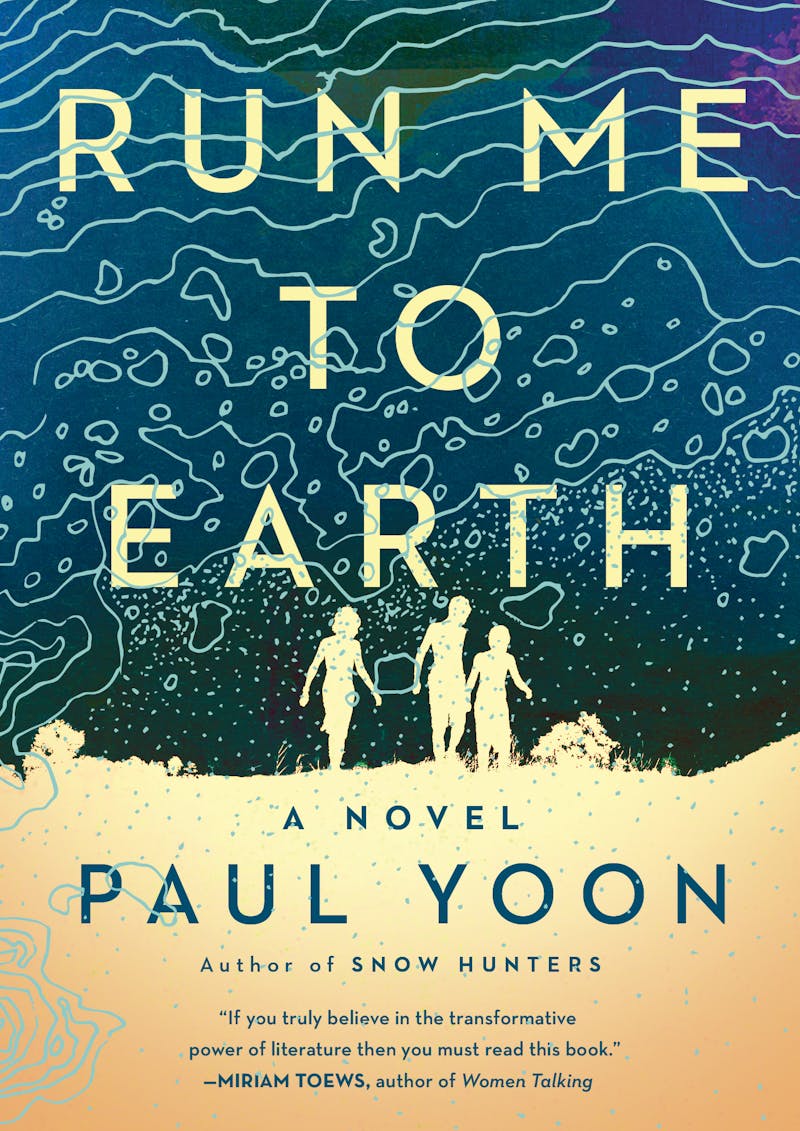Though I hate to admit my own ignorance, I will: I only just learned about the Plain of Jars, a series of more than 90 archeological sites in Laos, containing hundreds of stone vessels dating from the fifth century BCE. I learned about Stonehenge as a schoolboy, maybe because that site is older; maybe because its existence burnishes the myth of European centrality to human history; or maybe because the United States bombed the hell out of Laos for nine years, transforming the Plain of Jars into a death trap. Recording this in our history books would be simply too shameful, demanding the kind of self-examination at which this country has never excelled.

Run Me to Earth, Paul Yoon’s second novel (he’s also the author of two collections of short stories), is set partially in this landscape. It is, in some fashion, an act of archeology, an attempt to comprehend a recent history that nevertheless feels as distant as the Iron Age. In a prefatory author’s note, Yoon gives the reader the context our educations might have overlooked: Between 1964 and 1973, the U.S. dropped more than 500,000 bombs on Laos, “the equivalent of one bombardment every eight minutes, twenty-four hours a day, for nine years.”
Another reason I can perhaps be forgiven my ignorance of this ancient site: Experts can barely study it, because the Plain, as so much of Laos, is full of unexploded ordnance.
The book opens in 1969. Three teenagers, Alisak, Prany, and Noi, have found something like safe haven at an improvised hospital, located in a stately old home once inhabited by a Frenchman known only as the Tobacco Captain. They’re orphans: Alisak’s parents died from opium addiction, while Prany and Noi, brother and sister, cannot recall their mother and lost their father in the war. They devise a family of their own, with Vang, the doctor overseeing this facility, near a father figure.
The trio are some combination of orderlies and couriers, riding motorcycles through lethal terrain—marked with stakes to show where the bombs lie—to ferry patients or secure supplies. Yoon writes with precision and understatement, maybe the only way you can render a world in which bombs loom overhead and lurk underfoot. When one of their compatriots dies, the kids’ response is jaded: “They walked carefully into the smoke that was misted in red—the color they had grown so accustomed to it didn’t startle them anymore—and salvaged what they could: parts of the bike, clothes they could find that were still wearable, the backpack.”
For a book of fewer than 260 pages, Run is difficult to summarize. The second section is set in 1974, when a resourceful soul known as Auntie discovers that Vang and Prany are incarcerated in a reeducation camp together. Then it is 1977, and those two are released after their long imprisonment. Another character takes over the narrative in 1994, a world away in France, and the novel concludes in 2018. Throughout, Yoon’s sentences are spare, perhaps not to get in the way of the story, of which there is so much.
When the narrative makes its daring move from Southeast Asia to France, Yoon’s real aim becomes clearer. He’s not writing about Vietnam, the inadequate noun we use for a conflict that spilled over several borders; he’s writing about war, full stop. Even the characters not shaped by the bombing of Laos still live in the long shadow of World War II: Maybe every life is, in some way, colored by human conflict.
I’ll note that this is a spoiler, a turn in the book I found genuinely shocking. Upon their liberation from the camp, Prany and Vang seek revenge on one of their captors:
He grabbed the interrogator’s hair and pushed his head down and began to stab him in his side above his belt. The interrogator bit down hard on the towel and screamed and his eyes welled and reddened. He flopped like a fish out of water. Prany shoved the towel deeper into the interrogator’s mouth and weighed his knee down against him. He watched as Vang kept stabbing him, faster, all across his side, the carpet beginning to grow dark and thick and wet. His glasses fell off, but Vang ignored this, kept stabbing. Then he leaned down and spoke into the interrogator’s ear as the body jerked. Prany didn’t hear what Vang said.
Vang is a doctor, his commitment to saving those deformed by the American bombs unwavering: To see him so determined to take a life is startling. This eruption of violence concludes a very long scene that is not boring though is quotidian: a catalog of Prany and Vang trying to reacquaint themselves with the world as free men. Yoon’s control is admirable—the slow play by play, the way the victim of the attack is only ever called “the interrogator.”
In this moment, the author gives us the reckoning we’re hoping for, a simple catharsis. It does not last long. That Prany and Vang will come to a sad fate feels inevitable, but it still stings when the book reveals it. This is just how war works: unhappy endings for all.
I didn’t know about the Plain of Jars, and I still don’t know much about America’s actions in Southeast Asia those years before I was born. The author tells us, in his acknowledgments, that he’s taken liberties with some facts, but this is the artist’s prerogative. Run Me to Earth isn’t trying to educate or do the work of scholars and teachers; it has its own agenda. Art cannot supplant history, but it can amplify it.